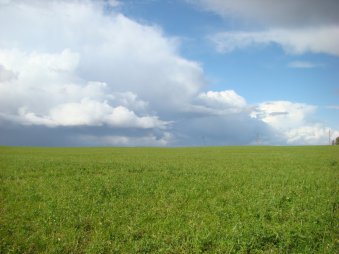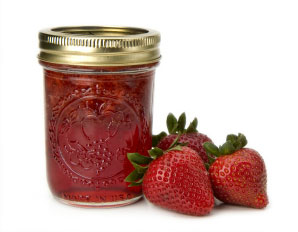 You know that smell in the air after a good rain? Or that smell that permeates the air when you dig into your garden’s soil every spring? Did you know there’s a scientific explanation for that smell? The science behind that wonderful “fresh earth” aroma is geosmin. Geosmin is an organic compound produced by a microorganism found in all soil, and it carries a distinct aroma and flavor. It’s what gives beets their earthy flavor. Sometimes if you drink water that’s been sitting out for a while, it develops a musty taste, and that, too, is caused by geosmin. Wine is known to pick up this flavor as well. The flavor produced by geosmin isn’t always a pleasant one, but the aroma it gives off is quite pleasing to the senses. So where does that smell come from, and why do we get whiffs of it after a nice heavy precipitation? It’s pretty simple: When it rains, water fills the air pockets found in the soil, and the geosmin gets expelled into the air. Sometimes you’ll even get an earthy whiff of geosmin before it rains. How, you ask? Well, a low-pressure system can de-gas the soil and put those geosmin into the air before a drop of water even hits the ground, leading many of us to say things like “It’s gonna rain; I can smell it!” Read more about geosmin from the Soil Science Society of America.
0 Comments
 If you share a love for these three things– the home-spun wisdom of The Farmer’s Almanac, fresh strawberry jam, and canning stuff from the garden– then do we have a recipe for you! First, if you haven’t learned how to can fruits and veggies, this is something you really should try. When you’ve got jars of your harvest stored in your pantry, then you can enjoy the taste of summer well into the dark and cold months of winter. Second, is there anything finer than a fresh strawberry jam? It is quite possibly the most-enjoyed of all the fruit flavored jams– it’s a step up from the grape jelly we all enjoyed as kids, but it’s not so exotic as to turn off the most finicky of eaters. And so, from the Farmer’s Alamanc, here is a great recipe for producing your own strawberry jam that can be enjoyed all year long (when you can it properly!): Ingredients: 4 cups of hulled, mashed strawberries (about 2 pounds fresh strawberries) 4 cups white sugar ¼ cup lemon juice Note: You can buy commercial pectin, though you don’t necessarily need to add any. Pectin occurs naturally in fruit, and is what helps the jam set. Adding liquid pectin can help jam cook more quickly and creates a slightly different texture. If you use it, be sure to follow the accompanying instructions to make sure your jam sets properly. Equipment: -Wide-mouth glass jars, bands, and NEW metal lids with rubber seals (you can reuse the jars and bands). -Large, non-stick pan -Long-handled wooden spoon -Non-reactive bowl (glass or plastic) -Candy thermometer (optional) -Boiling-water canner or deep pan with a canning rack or basket -Tongs -Small spatula -Clean dish towel First, sterilize your jars and lids. Wash them in hot, soapy water. Place the jars in a deep pan of boiling water, and boil for 10 minutes. Place the flat metal covers into a pan of simmering water. Leave lids and jars in the water until needed. Mix the strawberries, sugar, and lemon juice together in the large pan. Don’t fill it to the top, as the mixture could bubble over the edge. Heat on low, stirring until the sugar is dissolved—about 20 minutes. Bring the mix to a boil, stir often, and cook until it reaches the setting temperature of 220 degrees. If you don’t have a candy thermometer, spoon some jam onto a chilled plate, let it cool, then run your finger through the middle of it. If the jam holds its shape and doesn’t run back together, it’s ready! Let the jam stand for ten minutes. In the meantime, carefully remove the jars and lids from the hot water with tongs—have a clean towel handy to set them on. Skim excess foam off the top of the jam with a spoon, and then spoon the jam into the jars leaving a quarter inch at the top. Wipe off the rims and run the spatula along the inside wall of the jar to let air bubbles escape. Place the metal lid and then screw on the band. To preserve your jam for up to six months, process it by putting the jars into the boiling-water canner, following any instructions that come with it. You can get one at the supermarket, but if you don’t have one, place a wire rack in a deep pot, bring water to a boil, and boil the jars for ten minutes. Carefully remove the jars and set on a towel, allowing them to cool overnight. Check the lids to see if they sealed before storing in a cool place. |
